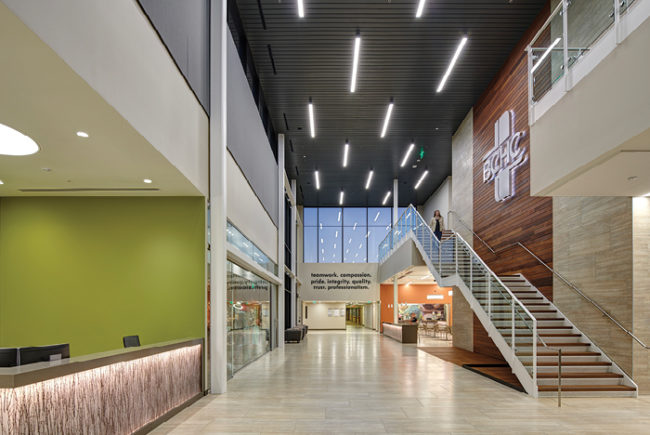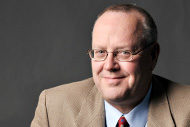
Soleran’s Rounding Suite applications help manage every aspect of the physical environment tour process, from documentation to closing the loop
Image courtesy of Soleran
Johns Hopkins is an $8.9 billion integrated global health enterprise. Based in Baltimore, the hospital is a short-term acute care, academic Level I trauma and comprehensive stroke center that employs 40,000 full-time faculty and staff members. It receives nearly 4 million patients and 325,000 emergency room visits annually. It has been placed at or near the top of U.S. hospital rankings annually for the past two decades.
For such an extensive network, ensuring that compliance-related matters are tracked and well-documented can be a daunting task. For instance, Johns Hopkins was using a method for its physical environment rounding that required too many steps, according to hospital leadership. Reports required copying and pasting into Microsoft Word and then emailing them out, with no easy way to track which reports were completed and which were still to be done.
“I really wanted something that could give the report to someone as fast as possible,” says Brian Schott, ASC, HEM, The Joint Commission environmental care specialist at Johns Hopkins.
At the time, hospital leadership was looking for ways to manage its off-site clinics. They heard about Overland Park, Kan.-based Soleran’s health care platform, which is specifically designed for such facilities. “I pitched the idea to pay someone to do this or find an app to save time, plus cut down on our findings,” Schott says. “I knew what I was looking for. We wanted to track data and trends.”
The hospital decided to implement Soleran’s Rounding Suite.
The Soleran Rounding Suite is a comprehensive software solution that manages every aspect of a hospital’s environmental tours and deficiency-tracking process. It automatically schedules tours for all areas, units or departments; electronically documents completed tours; and automatically notifies responsible parties. It comes complete with accountability and escalation processes to ensure that the loop is closed. By completing these tours or rounds, it helps keep patients and staff safe, and improves the quality and accuracy of accreditation documentation.
The Soleran implementation team held a kickoff meeting to review the installation process and goals. The team demonstrated the best practices for the software and the available configurations. Once configurations were specified, the team coordinated a secure data transition to accurately run the software for the facility team. Meanwhile, Johns Hopkins’ specified configurations were designed inside the rounding solution.
Once all configurations were completed, the solution was demonstrated and tested. All facility staff using the solution were included in the process for familiarization and feedback. Any additional changes that were needed to the software were noted and made per the facility’s request.
Final testing took place, and the Johns Hopkins’ facilities team gave final approval of the changes. From there, training began and was customized to their processes, covering all roles separately. Training was recorded for future reference and documentation was provided. After training concluded, Johns Hopkins was ready to go live with their new rounding software.
Soleran’s Rounding Suite proved not only to be a time-saver but also a way to efficiently budget. The data has helped Johns Hopkins identify citations and trends earlier, allowing the organization to rearrange finances to get those items addressed more quickly. The time saved on reporting is an estimated 20 hours per week.
With Soleran’s platform, the applications are completely integrated on the back end, and Schott allows the applications to “talk” to each other and help simplify facilities processes.
“Soleran’s work orders with rounding takes it to another level,” he says. “The best thing is it’s very intuitive. Everything is on the same platform. So, when we take pictures, it’s all together. And the efficiency! Very rarely do you have anything to do after work. When you leave, they get the report. I think that impresses people.”




